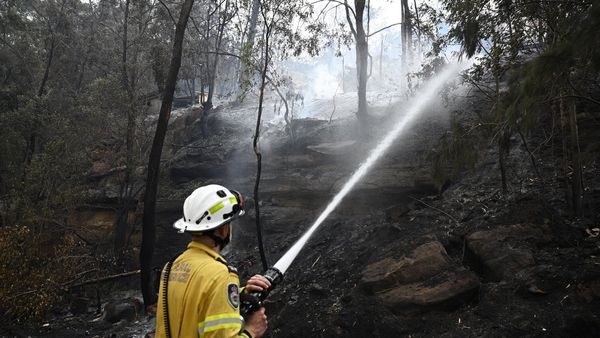The Rajasthan Assembly elections are scheduled to take place on November 25. A comparison of the economic, social, and environmental indicators of the poll-bound State with the indicators of other States shows that Rajasthan improved its rankings significantly between 2015-16 and 2019-21 in some social measures, while continuing to lag behind in many others.
Table 1 | The lists Rajasthan’s rank in social indicators and its actual score in an indicator in 2019-21, 2015-16, and 2005-06. It also shows the change in rank in 2019-21 from 2015-16. The performance of the top three States in the indicator are also given for comparison.
Chart appears incomplete? Click to remove AMP mode
For instance, Rajasthan had 16.8% wasted children (low weight-for-height) in 2019-21, and ranked 13 out of 30 States. The three best-performing States that year were Punjab (10.6%), Haryana (11.5%), and Uttarakhand (13.2%). In this indicator, Rajasthan’s ranking improved by eleven spots in 2019-21 from 2015-16, the year when the State was placed 24th out of the 30 States.
Across some social indicators, there has been notable improvement in rankings in the past few years. For instance, the share of households with any member covered under a health insurance/financing scheme improved from 18.7% in 2015-16 to 87.8% in 2019-21, pole-vaulting into the first rank from the 18th rank in the period. Rajasthan’s Infant Mortality rate rankings improved from 24th to 17th out of 30 States and its ranking in share of stunted children improved from 25th to 16th in the period.
Click to subscribe to our Data newsletter
However, it still lags behind in many other measures such as the share of the female population aged 6 years and above who ever attended school is only 63.5% — ranked 28th of 30 States. And over 25% of women aged 20-24 years were married before 18 years of age — ranked 24th of the 40 States. So, more specifically, Rajasthan still lags behind in indicators that measure women empowerment.
Table 2 | The table shows Rajasthan’s actual score in the human development index (HDI) and the change in rank in 2021, compared to 1990.
A comparison with data from 2005-06 shows that the State’s rankings in women empowerment indicators have hardly improved since. In educating girl children, the State was ranked among the bottom two in all three periods (2015-16 and 2019-21 as well). Given the progress in some social indicators, the State’s rankings in Human Development Index (HDI) improved by 7 spots from 27th to 20th between 1990 and 2021 as shown in Table 2.
Table 3 | The table shows Rajasthan’s per capita net state domestic product and its change in rank in 2021-22, compared to 1993-94.
Rajasthan’s economic performance is middling. Its ranking improved slightly by two spots — 20th to 18th — between 1993-94 and 2021-22 as shown in Table 3. Over 40% of the population in the State belongs to the lowest two wealth quintiles (Table 4).
Table 4 | The table shows the share of the population belonging to the lowest two wealth quintiles in Rajasthan.
Rajasthan’s manufacturing sector employed around only 10% of the State’s workforce and the sector’s share in total Gross Value Added was only about 7.5%. The State ranks at the bottom half of the table in both measures (Table 5).
Table 5 | The table shows Rajasthan’s rank in indicators related to manufacturing.
In educational indicators, the State shows mixed progress. In two measures — average annual dropout rate at secondary level (Class 9-10) and Gross Enrolment Ratio in higher secondary (Class 11-12) — the State ranked in the top half. While in other two measures — Adjusted Net Enrolment Ratio in elementary education (Class 1-8) and Gross Enrolment Ratio in higher education (18-23 years) — they featured in the bottom half of the rankings as shown in Table 6.
Table 6| The table shows Rajasthan’s rank in indicators related to education.
The State also showed mixed progress in environment-related indicators (Table 7). The State generated a relatively lower amount of plastic waste and featured at the top half of the State lists, while generating a relatively higher amount of hazardous waste ranking at the bottom half.
Table 7 | The table shows Rajasthan’s rank in environment-related indicators.
vignesh.r@thehindu.co.in and rebecca.varghese@thehindu.co.in
Source: National Family Health Surveys, Global Data Lab ad NITI Aayog
Also read | Madhya Pradesh in the bottom half of all State-level rankings | Data
Listen to our podcast | Examining the 70-Hour Work Week: Insight or Imposition by Infosys’ Narayana Murthy







